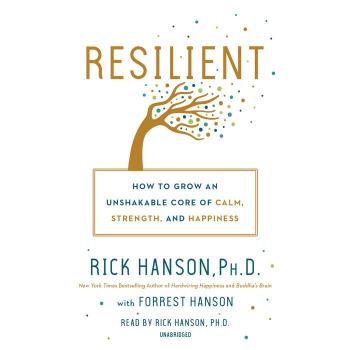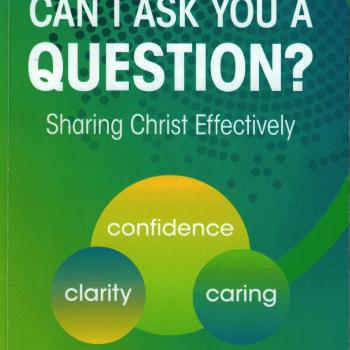Healing Through The Dark Emotions by Miriam Greenspan
Healing Through The Dark Emotions by Miriam Greenspan explores the way grief, fear, and despair can be used to heal a person who is in pain. The notion that she explores is the fact pain (whether it is physical or psychosomatic) is an indicator of a problem. She explores how expressing this pain emotionally through grief, fear, and despair is the natural way we heal.
Greenspan draws from a variety of spiritual experiences – Judaism, Buddhism, and Christianity – as well as personal experiences to show how these emotions are designed to help us, even when they hurt us.
She explains the reason why these emotions are called dark emotions. Bringing them to light may cause pain and difficulty to overcome. These emotions are not passive, but must be actively used (1). She cautions that feelings which are not expressed or addressed, can cause trouble (20). Greenspan makes the observation that the conflict in our lives is control. We cannot have control of all of our circumstances. We suffer sometimes and we have to deal with the loss of control (28). She wonders if Job’s friends empathize with his pain?(29) Greenspan states that mystery is part of suffering and part of vulnerability. She correctly notes that God never told Job why he was suffering. His friends couldn’t help him. They didn’t really comfort him (29).
Life is full of twists and turns, detours and unexpected delays (31). Vulnerability and mystery go hand-in-hand (31). The defining characteristic of vulnerability and suffering is giving up control and to be less demanding (34). Greenspan explains how to cope with loss of control. One comfort to note is that only the body is vulnerable, not the spirit (37). There will always be vulnerability while in our physical bodies (39). Therefore, vulnerability is a source of strength (40).
Greenspan is critical of Goleman’s book Emotional Intelligence (73). She explains how to deal with adversity. She notes that the Bible states that we should not run from adversity. If we run from it, we don’t learn the lessons (75).
Experiencing the dark emotions makes us go through a reframing, or paradigm shift. It is not negative. We can repurpose it to a positive experience. It is a normalizing of our emotions. It can teach us. Greenspan states that you can have an emotion and that is different than when you express that emotion (80). She notes that the body alerts one to an emotional state of disorder. Solitude and health self-talk can be a form of soothing (81).
Greenspan talks about grief and her wisdom on this subject is helpful. She states that grief can reshape the ego (94). As I go through the process of grief, I began to ask questions I could answer. Instead of always questing “Why?” I can learn to ask: “What shall I do with my sorrow?” (this is the same answer that Job learned (98)).
Greenspan makes the good point that not everything can have a clinical diagnosis (103).She also says a great piece of advice: If we diagnose it, we medicate it. But we should not medicate grief. The problem is that society says not to grieve and then we can’t grieve because we make it an illness, not a process (104).
Greenspan shifts from grief to despair. Some antidepressants may prevent someone from going through the process of despair and exiting on the other side something to learn from it. Greenspan notes that one grows through despair. One may still need to go through therapy, even if you use some form of antidepressants for a small amount of time (121).
Greenspan then talks about fear. She notes that anxiety and fear are not the same thing. We fear something. We are anxious about everything. Philippians 4:8 says not to be anxious about anything (166). Greenspan notes that there is a difference between fears and phobias. Phobias prevents us from facing the fear (166).
The Greenspan makes the most profound statement in the book: “We can’t heal what we don’t feel.” To put it another way, if we can feel it, we can heal it.
Following such wonderful wisdom on the nature of the dark emotions of grief, despair and fear, Greenspan shifts her focus and attention to the difference between the emotional intelligence of woman and me. She speaks about the lack of emotional intelligence in men. She assigns the carrier and bystander roles in healing to gender (214). As one reads through this section, one might the impression that Greenspan is biased against me and for women. Women are more intuitive, and have a better handle on their emotions. However, as one continues to read, you discover that Greenspan wrote the book to help men. Men need to be allowed to be more emotional.This book is geared to men (218).
Following this, Greenspan shows how dark emotions affect the wider world of history. People who lack empathy have a negative effect on world events, with terrorism being the most obvious example (221). (The fact that this book was published immediately after of the events of September 11, 2001 has a strong influence in this section of the book.) Dark emotions affect world history. Bystanders who don’t make decisions can affect world history (239).
Greenspan ends with a couple of interesting observations:
1. Emotionally, we try to distance ourselves from world events. We numb, avoid, and do everything we can to avoid how life and the world impacts us. We don’t realize how much the global events affect our health (242).
2. Psycho-genetic pain comes from not dealing with our dark emotions. It starts with the psychic and manifests itself physically. We need to learn to deal with our emotions or it will come out in pain (243).
3. The church should learn to deal with the dark emotions of people. As Christians, we really need to learn to “build each other up.” God is in control, but the devil is to blame when something goes wrong (243).
4. If you don’t attend to your feelings, you will have problems (247).
5. The world is in a state of decay. We are accelerating the state of decay (250).
6. There is value in naming emotions caused by the troubles in the world. Greenspan says that healing of the dark emotions will (help) heal the problem. As community, we can have some positive effect (260).
7. As the Bible states in 2 Corinthians 1:3-9 we can give people comfort with the comfort we have been given. We can broaden our perspective, challenging people’s perspectives, and make a difference (262).
Greenspan ends the book with thirty-three emotional exercises to help you develop skills and cultivate patience and faith (265).
I would highly recommend this book for pastors. Personally, I was at first upset by the postmodern style of spirituality that Greenspan brought into this book. However, when one steps back and looks objectively at what she is trying to communicate, there is a much wisdom to be gleaned. Greenspan gives the reader help in dealing with emotions that every person will go through. While I would not use every exercise in the back of the book, these exercises are helpful. A pastor would be wise to look through them to discover how to use them in the church.













